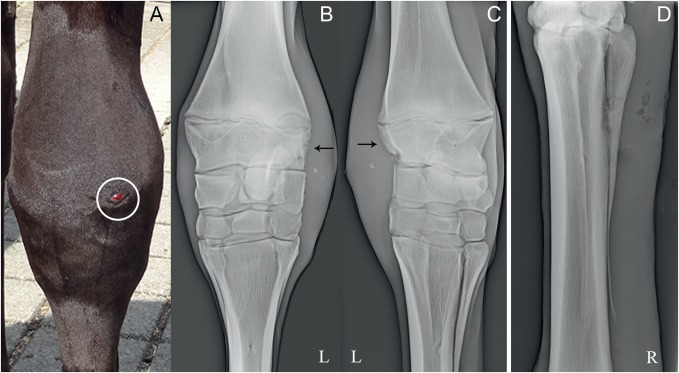Osteomyelitis, often known as bone infection, is an inflammation of the bone or bone marrow. Inflammation of your dog’s bones or bone marrow can be caused by bacterial or, in rare situations, fungal diseases. It most usually affects your dog’s mouth and limbs. This is usually caused by contamination from a wound or fracture, or it is transferred from another region of the body.

Osteomyelitis is a dangerous illness that requires prompt attention. Inflammation could be caused by a recent infection or a long-term infection. Infections from other parts of the body can enter the bloodstream and reach the bones or bone marrow, or the infection could be caused by another infection adjacent to the bone.
Table of Contents
Causes of Bone infection in dogs
Osteomyelitis is caused by a bacterial or fungal infection that has permeated or migrated to the bone from another region of the body. Any pathogenic bacteria can produce a bacterial infection, which is most usually caused by surgery or contamination from a wound. To avoid contamination, take precautions before, during, and after any surgery. Fungal infections vary in geographical spread and are frequently transmitted from another place to the bone.
Osteomyelitis in dogs is caused by a variety of factors.
- Widespread infection from other body parts that enter the bloodstream and reach the bone marrow
- Bone and soft tissue injuries as a result of accidents or injuries
- Post-surgical operations
- Surgical implants
- Prosthetic joint implantations
- Post-surgical operations
Symptoms of Bone Infection in dogs
Osteomyelitis symptoms differ depending on where the infection is located. If left untreated for a long period, osteomyelitis can permanently destroy your dog’s bones. The following are symptoms of a bone infection:
- Excessive sluggishness
- Weakness
- Depression
- Fever
- Leg numbness
- Whining
- Bloody or pus-filled wounds
- Appetite loss
- Persistent ulcers
- Pain and swelling in the affected limb
Diagnosis of Bone Infection in dogs

Your veterinarian may request a detailed medical history of your dog during your check-up. They may inquire about your dog’s current health and the events that may have led to the bone infection. Physical examinations may be conducted to assess your dog’s health.
Diagnostic tests may be performed by your veterinarian to determine the location and degree of your dog’s bone illness. They may use X-rays, ultrasound tests, MRI scans, or CT scans to get a better look at the problematic area.
In some circumstances, a surgical biopsy of the bone may be performed to confirm the diagnosis. In the case of systemic illnesses, your veterinarian will take a blood sample and culture the causal organism within it to determine the best antibiotic medications to use.
Treatment of Bone Infection in dogs
Your veterinarian will be able to propose medication or surgical treatments once your dog’s ailment has been correctly diagnosed. The type and severity of your dog’s bone infection will determine this.
Medical Assistance
The source of the infection can be addressed with a strong course of antibiotics. Antibiotics, either oral or injectable, are usually required for the long term to guarantee that the infection is completely eradicated. Once the culture results are in, your veterinarian will be able to determine which drugs are required to treat the illness and prevent it from spreading. A fungal infection can be treated with antifungal medicines.

Surgery
If the medicine is ineffective, your dog may undergo surgical procedures. This is mostly true in cases of serious bone infection. Depending on the cause of infection in your dog, the process may differ. Keep in mind that surgery carries dangers, so it’s best to talk to your veterinarian about it.
Osteomyelitis might take a long time to heal from. Your dog may not be capable of putting much pressure on the damaged limb if the original injury was severe. While the bone heals, it must be stabilized, which means that any activity must be restrained and overall movement will be limited. While your dog’s fracture heals, you should provide a calm, secure environment for him to rest in, and limit the number of distractions that could cause worry or discomfort.
Antibiotics will almost certainly be used during the healing phase. You’ll need to take your dog to the veterinarian for follow-up exams at regular intervals to check on his or her response to therapy and track the healing process.




